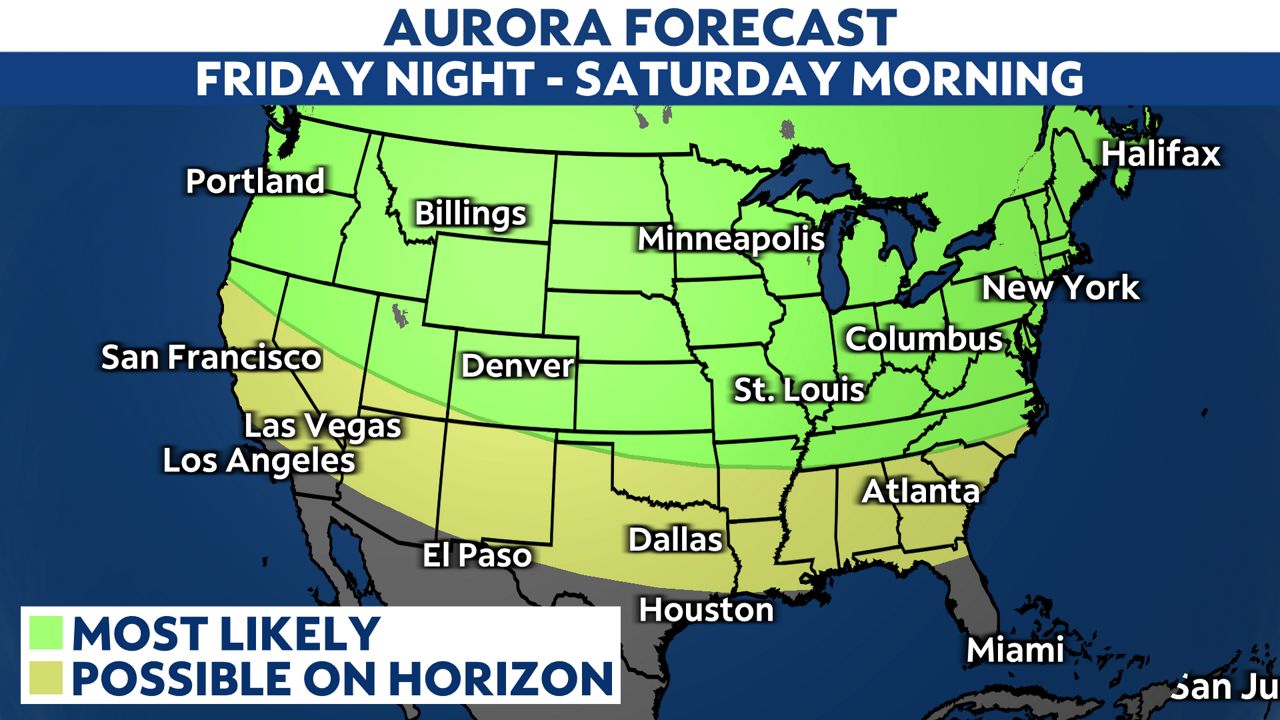A strong geomagnetic storm is expected Friday night. NOAA’s Space Weather Prediction Center has issued a G4 (Severe) Geomagnetic Watch for the first time since 2005, meaning the northern lights, or aurora borealis, could be visible for much of the northern United States on Friday night and early Saturday morning.
It may be visible low on the horizon further south, from Southern California east across the Southern U.S.
According to the Space Weather Predicition Center, several coronal mass ejections (CMEs) will likely reach Earth and lead to highly elevated geomagnetic activity. A CME is an eruption of solar material, and G4 watches are very rare.
The CMEs are forecast to arrive at Earth late Friday, May 10, or early Saturday, May 11. Under clear skies, the northern lights should be visible across much of the northern U.S. Further south, they could be visible on the horizon.
Tonight’s forecast
Tonight’s forecasted “planetary K index” is an 8 out of 9, and the forecasted G-scale is a 4 out of 5. That indicates a severe geomagnetic storm, and a very active aurora.
Here is tonight’s forecast from the University of Alaska Fairbanks Geophysical Institute. The northern lights are likely to be visible on Friday night and early Saturday morning for areas shaded in green, and they could be visible on the horizon for areas shaded in yellow.
To ensure the best chance at getting a look at the northern lights tonight, look toward the northern horizon. The best viewing conditions are under cloud-free skies and away from bigger cities with light pollution.
If you see the northern lights tonight, be sure to submit your photos on the Spectrum News App!
Our team of meteorologists dives deep into the science of weather and breaks down timely weather data and information. To view more weather and climate stories, check out our weather blogs section.

